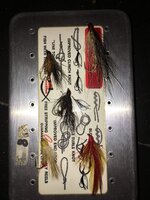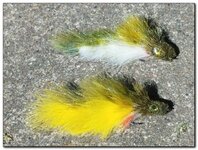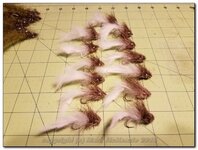- Messages
- 5,069
- Reactions
- 11,352
Winter lasts far too long. Spring cannot get here soon enough, and passes by far too quickly. So with little opportunity to chase my favored fish in my favorite weather, I am tying flies.
I hardly touched my baitcasters last year, save for carp fishing (but I was stylish fishing for carp with a Loomis rod and Curado reel ) - I am on a streamer (fish imitating fly) jag.
) - I am on a streamer (fish imitating fly) jag.
I have also watched waaaaaay too many videos of guys fishing Bull Shad and Huddleston swimbaits catching big bass. And then theres the Musky fishery close by I have yet to try, so I have been tying flies. BIG flies.



These are fly rod swim baits. Big nasty articulated swimbaits. For the big guy - the 11 incher, I need to buy a new, heavier rod. I can cast everything else on an 8 weight. Not pretty, but I can bomb the 6 to 7 inch stuff out to about 75 feet with my 8 weights.
I hardly touched my baitcasters last year, save for carp fishing (but I was stylish fishing for carp with a Loomis rod and Curado reel
I have also watched waaaaaay too many videos of guys fishing Bull Shad and Huddleston swimbaits catching big bass. And then theres the Musky fishery close by I have yet to try, so I have been tying flies. BIG flies.

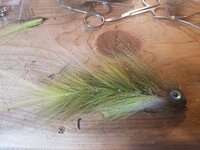
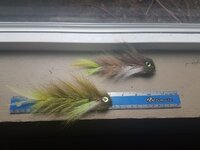
These are fly rod swim baits. Big nasty articulated swimbaits. For the big guy - the 11 incher, I need to buy a new, heavier rod. I can cast everything else on an 8 weight. Not pretty, but I can bomb the 6 to 7 inch stuff out to about 75 feet with my 8 weights.







